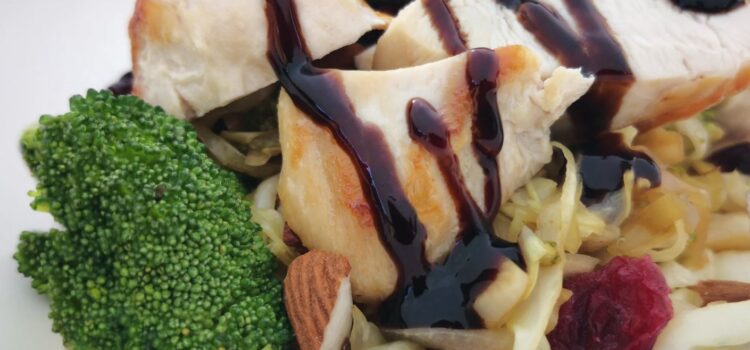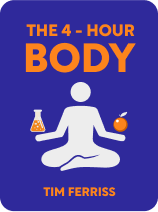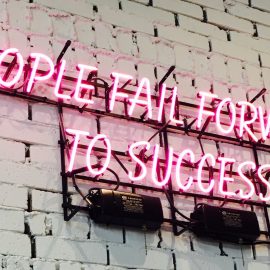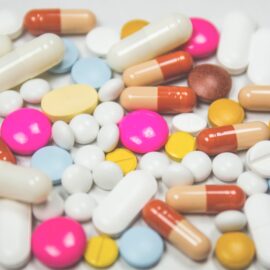

This article is an excerpt from the Shortform book guide to "The 4-Hour Body" by Timothy Ferriss. Shortform has the world's best summaries and analyses of books you should be reading.
Like this article? Sign up for a free trial here .
Are you considering the Slow Carb diet? Do you need a Slow Carb food list to help you stay on track?
This Slow Carb food list breaks down the rules of the diet in The 4-Hour Body. With this 4-Hour Body food list, you can see results like author Tim Ferriss did.
Read on for the Slow Carb food list and rules to stick to.
Editor’s note: This article is part of Shortform’s guide to dieting. If you like what you read here, there’s plenty more to check out in the guide!
Slow Carb Diet Food List
Rule #1: Stop eating white-colored carbohydrates, or any carbohydrates that come in white-colored varieties (rice comes in white, brown, pink, black—don’t eat any rice). White-colored foods are not included on the Slow Carb diet food list. Avoiding white-colored food will also help you avoid diabetes-causing chemicals created by bleaching flour.
- For example, don’t eat pasta, tortillas, potatoes, bread, cereal, and breading on fried food. Cauliflower is allowed.
Rule #2: Repeat the same 3-4 meals regularly. This allows you to avoid foods that will make you gain fat and ensure you get enough protein (at least 20 grams per meal). Each meal should contain one item from each of the following categories within The 4-Hour Body food list:
- Protein: eggs (especially whites), beef, fish, pork, chicken thigh or breast
- Legumes: lentils, soybeans, pinto beans, red beans, black beans
- Vegetables: any vegetables you like. The author recommends sticking to green beans, peas, broccoli, asparagus, spinach, kimchi, and sauerkraut because including more takes too much work between shopping and prep time.
Rule #3: Eat two to three times what you used to. You’re probably used to small portion sizes if you’ve been eating things like pasta, which isn’t very physically large but contains a lot of calories. Slow-carb foods don’t have as many calories by volume, so you need to eat a larger quantity. However, don’t overeat nuts or chickpeas—you’ll gain fat.
Rule #4: Eat at prescribed times:
- Eat breakfast within an hour, ideally within half an hour, of waking up. Never skip breakfast—if you have little appetite in the mornings, eat only a small amount of high-protein breakfast, such as 2-3 eggs.
- Eat four meals a day, four hours apart.
Rule #5: Drink beverages according to the following rules:
- Drink lots of water. Your liver, which is largely responsible for fat loss, needs a lot of water to function properly.
- Drink as many low- or no-calorie drinks as you like, for example, unsweetened tea.
- Don’t drink juice, milk, or soda.
- Drink fewer than 16 ounces of diet soda per day. (Even though sweeteners don’t have calories, they increase insulin release. “All-natural” sweeteners are especially bad for you.)
- Optional: Drink up to two glasses of low-sugar red wine per day.
Rule #6: Avoid fruit, except for tomatoes and avocados in moderation. Fruit contains the sugar fructose, which will make you gain fat. Fructose can also increase the uptake of trace elements such as iron, and iron can be toxic in large quantities. That’s why fructose is not included on the Slow Carb diet food list.
Rule #7: Don’t eat dairy, except for cottage cheese. Even though dairy products have a low glycemic index, they produce a large insulin release, which will make your body store fat.
The 4-Hour Body Food List for Plant-Based Diets
When moving to a PPBD, it’s best to transition slowly to avoid the following problems:
- Not eating enough calories. If you stop eating meat, you need to replace it with something or else you’ll feel hungry or eat vegetarian junk food, such as imitation meat.
- Giving up on the diet because it’s too hard.
There are five steps to achieving a 100% PPBD, but you can stop at an earlier step if you think the later steps are unsustainable for you.
- Replace starches, such as bread and grains, with legumes, such as beans. This is already part of the Slow-Carb Diet so should be familiar.
- Make sure your meat comes from local sources (within 50 miles of where you live). Likewise, ensure it’s grass-fed and/or pasture-raised.
- Eat less meat by only eating meat on certain days of the week (such as cheat day) or only after 6 pm.
- Stop eating meat except for fish. Continue to eat dairy and eggs.
- Move to eating only plant-based foods.
Supplements on the Slow Carb Diet Food List
The author discusses three families of supplements that are encouraged on the Slow Carb food list:
PAGG
The author recommends taking a combination of supplements with the acronym PAGG to reduce the amount of insulin your body releases and aid fat loss:
- Policosanol is a plant wax extract. The author originally took it in an attempt to lower his cholesterol (it worked for him even though there’s no conclusive scientific evidence of its effectiveness). He discovered that it had a side effect of increasing the effectiveness of the other three supplements below. Take one dose (20-25 mg) per day before going to bed.
- Alpha-lipoic acid (ALA) is an antioxidant (a compound that protects cells against potentially dangerous molecules). It’s useful in fat loss because it encourages carbohydrate storage in muscles or the liver, rather than in fat. Take 100-300 mg (less if you experience acid reflux) four times a day before breakfast, lunch, dinner, and bed.
- Epigallocatechin gallate, which is found in green tea. It’s useful in fat loss for two reasons: 1) like ALA, it encourages carbohydrate storage in muscles and additionally inhibits storage in fat cells, and 2) it kills off mature fat cells (when you lose weight, your fat cells shrink but don’t die). Take 325 mg three times a day (use decaffeinated green tea extract pills to avoid the caffeine and imprecision of tea-drinking) before breakfast, lunch, and dinner.
- Garlic extract. Garlic contains allicin, which appears to inhibit fat regain, though the science isn’t well understood. Take at least 200 mg four times a day before breakfast, lunch, dinner, and bed. Raw garlic will upset your stomach, so cook it, or take an aged-garlic extract that contains allicin and S-Allyl cysteine (which may help the body uptake allicin).
You should take the supplements six days a week and take a full week off every 60 days.
ECA
Before discovering PAGG, the author took a combination of supplements known as the ECA stack (ephedrine hydrochloride, caffeine, and aspirin). While many studies agree that the cocktail is effective, and the author saw results, it produces some serious side effects including adrenal fatigue and withdrawal pains. He doesn’t recommend the ECA stack.
Probiotics and Prebiotics
There are two types of gut bacteria related to fat absorption: Firmicutes and Bacteroidetes. Obese people have a higher ratio of Firmicutes to Bacteroidetes. As they lose weight, the ratio includes more Bacteroidetes. Scientists don’t know exactly how Firmicutes and obesity are related yet.
You can influence your gut bacteria populations by taking probiotics and prebiotics. Probiotics are bacteria, and prebiotics are substances that promote the growth of bacteria.
Additionally, to keep your gut healthy:
- Avoid Splenda. A Duke University study discovered that Splenda reduced the number of healthy gut bacteria.
- Eat more fermented foods, such as kimchi and sauerkraut. Fermented foods contain healthy gut bacteria and are a common element to the diet of extremely healthy indigenous communities.
A healthy gut comes with some additional benefits besides fat loss—95% of the body’s serotonin, a hormone related to mood, is produced in the gut. Therefore, a healthy gut contributes to better mental health.

———End of Preview———
Like what you just read? Read the rest of the world's best book summary and analysis of Timothy Ferriss's "The 4-Hour Body" at Shortform .
Here's what you'll find in our full The 4-Hour Body summary :
- How to do the least amount you need to do for the results you want
- Why you need a cheat day in your diet
- How to improve everything about your body, including sleep, sex, and longevity






